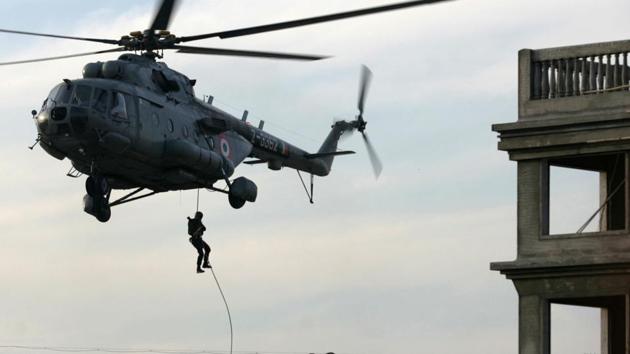26/11 attacks anniversary: Lessons shrouded in lethargic strategic culture
26/11 Mumbai attacks: The attacks happened because the national security apparatus from Delhi to Mumbai was found inadequate to anticipate this kind of a threat from the maritime domain and when it did unfold over three days, the various institutions were found wanting.
Mumbai city was held hostage by a group of terrorists from the Lashkar-e-Taiba who entered the city by the sea route and carried out a dastardly attack that led to the death of 166 people. The dead included security personnel and 28 foreign nationals from 10 nations.

Consequently, 26/11 has been etched on the Indian collective as a totally unexpected and surprise attack on national sovereignty by a ruthless terrorist group with visible state support. Ten years later, it is valid to ask if India’s seas are safer and could terrorists succeed in taking the sea route again? And furthermore, have the gaps in coastal security been plugged effectively and the appropriate lessons learnt and internalised across the security lattice of India?
26/11 happened because the national security apparatus from Delhi to Mumbai was found inadequate to anticipate this kind of a threat from the maritime domain and when it did unfold over three days with murderous consequences, the various institutions mandated to deal with such an exigency were found wanting. The Indian Navy, the Indian Coast Guard (CG) and the local Mumbai police, who have different areas of responsibility, were unable to detect and prevent the terrorists from sneaking into the city and carrying out the attacks.
This gap was compounded by the fact that the national intelligence infrastructure that includes the external, domestic and state/city level agencies were unable to pick up any significant lead in the run-up to the 26/11 attacks that could have pre-empted the massacre of innocents that took place in late November 2008. It later transpired that the slim intelligence lead provided to the navy was not actionable.
Important lessons were learnt in the immediate aftermath of 26/11 and the most significant was the acknowledgement that maritime domain awareness (MDA) in the Indian Ocean region needed to be enhanced by a significant index with appropriate focus on the more vulnerable coastal regions. A comprehensive plan that included a chain of coastal radars was envisaged in two phases.
The Coastal Surveillance Network (CSN) with a chain of surveillance radars, cameras and related sensors has been established along the coast. The first phase of 46 radars has been installed and 38 more are in the pipeline as part of the second phase. Almost 1,500 potential landing points on the coastline have been identified and a broad division of responsibility has been arrived at, which involves the navy, the CG, the local police of the coastal states and the local fisher folk.
26/11 was enabled by the reality that one small vessel was able to enter the shores of Mumbai undetected and this was a gap that had to be plugged. Small fishing craft in India are in excess of 200,000 and over the last 10 years there has been an attempt to fit them with an automatic identification transponder system and introduce a colour code state-wise. This has been partially successful though the scale of the numbers and the compliance by owners remains uneven.
In November 2014, India commissioned the Information Management and Analysis Centre in Gurgaon, which is a joint operational facility of the navy and the CG. Shipping data from various sensors and databases is aggregated, correlated and then disseminated to various stations for enhanced awareness.
The gist is that the seas around India are better monitored now, after the enormity of November 2008 and the MDA index is much better – but that is only part of the success that has been achieved as far as composite security of the seas is concerned.
Coastal security is complex and 26/11 has revealed the inherent vulnerability of a country that has the kind of geography and security culture that India has. Mumbai 2008 triggered the need to beef up coastal security assets and the CG was enabled such that its ability to board vessels and monitor the coastal waters was enhanced. Consequently the CG has doubled its operational deployments since 2009 and average deployment per day is: ships/boats 35-40 and aircraft 10-15 sorties. One indicator is that average total aircraft flying efforts in 2009 which was over 10,000 hours annually is now over 21,000 hours . The CG extensively undertakes boarding operations which has resulted in a 50% increase in apprehensions at sea.
However while the navy and the CG have made steady improvements in their capabilities and organisational procedures, the last-mile credibility of coastal security lies with the state led maritime police and this domain is far from satisfactory. Coastal states lack the resources – both fiscal and HR -- to ensure 24/7 surveillance in critical coastal areas and 10 years after 26/11, this is a glaring gap with modest exceptions on the east coast.
And a final observation: India’s comprehensive maritime security compulsions go beyond what 26/11 symbolises and warrant a national maritime authority with a dedicated high-ranking professional adviser at the helm. Currently, legislation about India’s maritime security is embedded in a coastal security bill that is yet to be objectively deliberated upon and in the interim, a committee has this onerous responsibility – the NCSMCS (National Committee for Strengthening Maritime and Coastal Security).
Alas, the lessons learnt from 26/11 remain shrouded in India’s reactive and lethargic strategic culture and national security remains hand-maiden to short-term political considerations.






